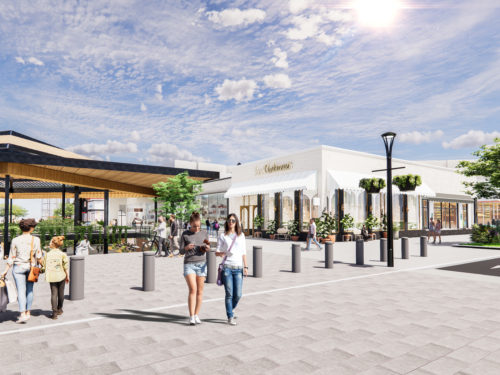Benoy is demonstrating that it’s this shift – beyond the transaction to the experience – that’s key to making a success of retail today. At its Starfield Hanam complex serving the Greater Seoul area, a world-leading sports experiences centre and an aquatic club and spa sit alongside traditional boutiques – creating a unique destination where visitors can spend all day shopping, relaxing and socialising. Time Out described the scheme as a“shopping theme park”.
Seah sees the ideal retail environment as more theatrical production than shopping centre.“Our designs are veering towards the museum and gallery – a beautiful space to experience objects.”
In its plans for a new retail complex in Dubai, for example, Benoy is pioneering“a new form of shop window” – an arena for customers to interact with products, as well as areas to stage performances, trials and launches. Meanwhile, the interior columns have been fitted with flat-screens to augment physical presence with online connectivity and interactivity, an example of how technology can improve the shopping experience, not just replace it.
Benoy’s innovative approach to display also breathed new life into Sydney’s iconic David Jones centre – visitors now encounter a striking“shoe gallery” on the eight metre-high seventh floor. In an effort to enhance and animate the visitor experience, the architects brought natural light into the building and exposed its original architecture. It also reconfigured the store’s entrances in an effort to create a dialogue with the urban realm, recognising developments that blend seamlessly into the city have greater longevity and public appeal.
This nod to context is also vital to the experience at Starfield Hanam, where the architects capitalised on the famous surrounding mountains and Han river.“A connection with the outdoors helps put visitors at ease, which encourages dwell time and, by extension, purchases,” Beckingham says.“We found every opportunity for people to look outside – terraces to enjoy views, a nature trail around the building and a spa on the roof.”
Turning attention to the customer experience doesn’t necessarily mean an expensive pay-off between transaction and display space, observes Jamie Webb, Benoy’s head of EMEA, pointing out that many stores maintain unnecessarily large storage areas.“One British department store we’re working with occupies 40% of the building it’s in,” he says.“We’re helping it maintain a high-street presence with a smaller footprint.” Others focus disproportionately on ground and first floor, even though upper and basement levels could host amenities that require less visible presence, for example co-working, music venues and gyms.
It’s clear that the trend towards online shopping is not going to be reversed. Nor should it. Instead, Benoy is raising the bar for what consumers can expect from the real world. As Beckingham observes:“Once you have the ease of buying online with the experience of shopping in store, that will be a powerful thing.”






